
 |
|
|
Fruits
Volume 57 Number 7 Date 05/24/2012 CODLING MOTH - Reports indicate that there is considerable variation in codling moth pressure between orchards. Counts ranged widely in the past week, with 18 of the 29 monitoring locations registering economic numbers of 5 or more moths per trap. The weekly high count of 44 male codling moths was documented near Mount Horeb in Dane County. Egg deposition has accelerated and a strong potential exists for damaging populations if treatments are not applied on time. Apple orchards that established biofix on May 3-4 are now approaching the 250 degree day point at which a larvicide should be applied. However, in locations where the spring flight has been minimal, growers may benefit from delaying applications until 350 degree days post-biofix. Orchard IPM Specialist John Aue considers a cumulative count of 20 or fewer moths in the 250 degree day interval after biofix to be a small flight, and recommends that growers in this situation delay spraying until 350 degree days. On the contrary, orchards that registered high moth counts immediately after the flight began in early May should treat soon, at the traditional 250 degree day standard. SPOTTED TENTIFORM LEAFMINER - Moth counts are expected to increase abruptly by early June as the second flight begins. Numbers were extremely low this week and ranged from 1-68, with an average of only 10 moths per trap. This is the lowest average count since the first flight began in mid-April. The economic threshold for STLM increases from 0.1 to 1.0 mine per leaf for the second generation of sapfeeder larvae in June. PLUM CURCULIO - The migration period has effectively ended across southern Wisconsin. Apple growers who applied a material for plum curculio control--whether a perimeter spray, an alternate-middle spray, or a complete cover spray--should not expect to see additional migration from the orchard perimeter. Oviposition inside the orchard, however, will extend into June. The migration is still in progress in northern Wisconsin, and growers there should continue to monitor perimeter trees for oviposition scars and feeding injury. SAN JOSE SCALE - First generation crawlers have been active in southern Wisconsin orchards for the last several weeks, and many have settled onto the fruits and leaves by now. Continued sampling by taping scaffold branches is advised to determine when hatch is complete and if control treatments were effective. Neonicotinoids, insect growth regulators or other materials directed against mobile crawlers are ineffective once the scales have begun to secrete their waxy covering. OBLIQUEBANDED LEAFROLLER - Development of this insect varies greatly by orchard location. The spring flight of moths has been underway in the south for 3-4 weeks, while larvae of various maturities are still present at some sites. Orchards that successfully controlled the second generation last August are reporting lower numbers of moths this spring. The recommended scouting procedure for OBLR is to begin checking terminals for small larvae 7-10 days after the first moths are captured. Although there is no direct correlation between trap counts and larval populations, scouting is imperative since orchards that register even low counts (< 5 moths per trap) can develop significant larval problems 10-14 days after a flight has occurred. GRAPE FLEA BEETLE - This insect reportedly has caused severe damage to grapes in northern Wisconsin vineyards, where grape development is less advanced and many varietals were in the swelled bud to bud burst stages as of May 11. The most significant injury was observed on vines near vineyard perimeters adjacent to grassy areas, alfalfa and woodlots. Wild grapes were also attacked by the adults, which consume the leaf tissue of newly expanded leaves. Farther south in Sauk County, the larval stages were very active, numerous and rapidly devouring grapevine foliage in the past week. -- Krista Hamilton, DATCP Entomologist 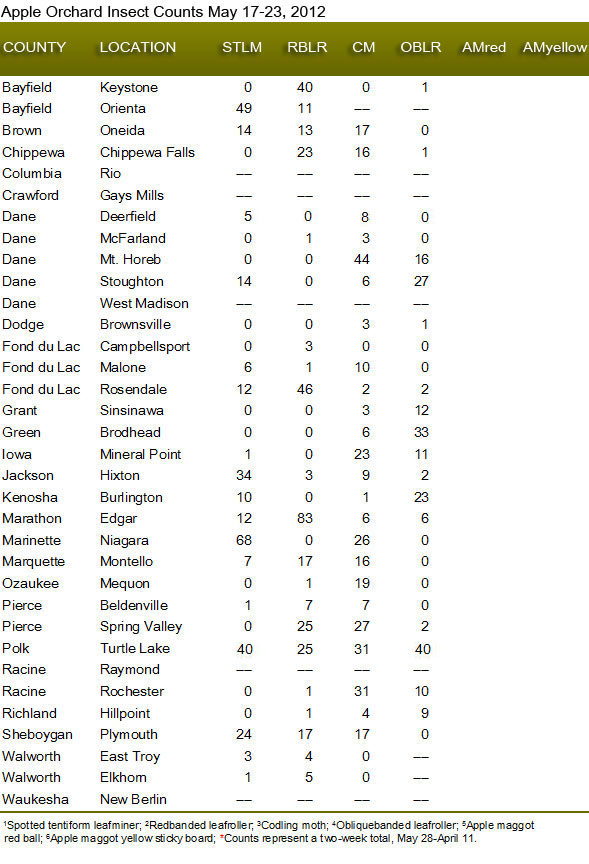
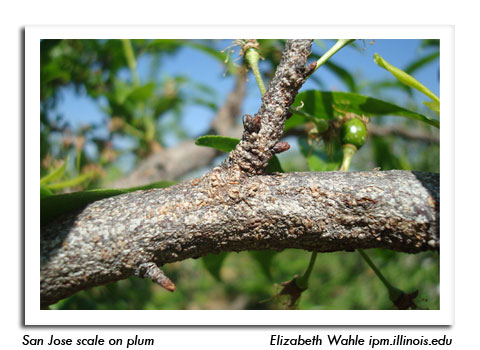
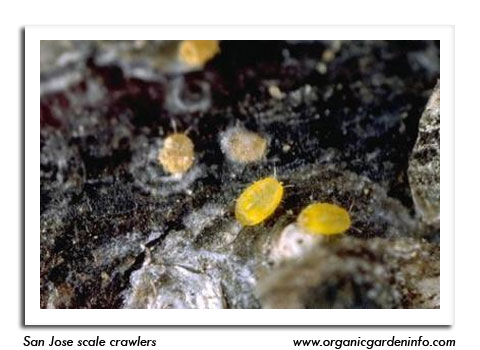
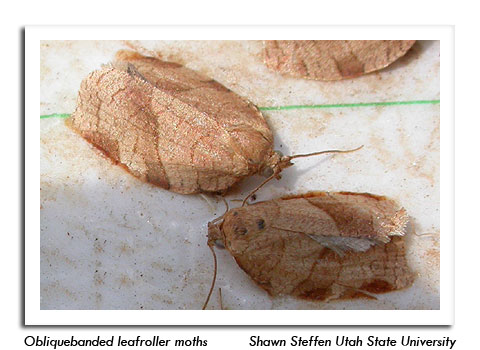
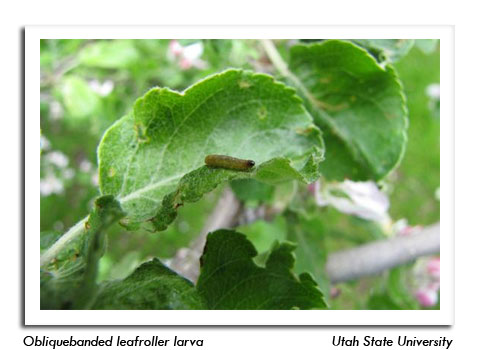

|
|
|